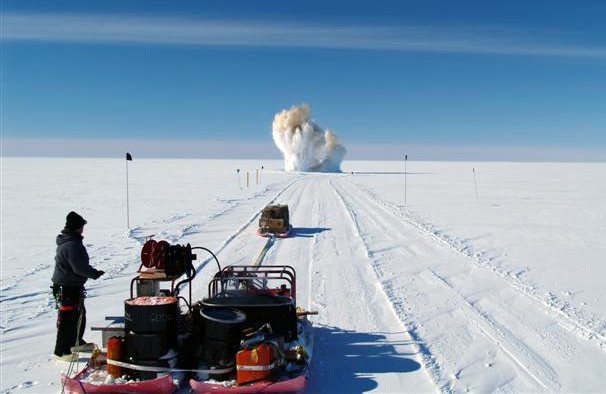I was recently asked “How does the station here generate
electricity?” The answer,
unsurprisingly, is that we burn fuel to run generators, heat the buildings,
melt ice into water, etc. Historically,
the fuel was delivered by aircraft-- LC-130 skier planes fly from McMurdo to
Pole with far more fuel than they need and unload some when on the ground.
However, airlifting fuel is not that efficient: each flight
can only deliver 1/3 of its fuel at best.
Starting 12 years ago, the Antarctic Programs began building a Highway
from McMurdo to the South Pole so they could use large tractors to drag bags
(“bladders”) of fuel across the ice (seen arriving at the South Pole Station in the picture below).
There are currently three traverses per season, and each delivers 100,000 gallons
of fuel to the station, which nearly satisfies the station needs. They get the last 100,000 gallons from a
dozen planes.
The route that the traverse takes is a bit different that
the route taken by the early explorers.
Amundsen, Scott, and Shakleton all chose routes that were nearly direct
shots from the Ross Sea, scaling glaciers in the Trans-antarctic
Mountains. The modern traverse path
circumvents much of the mountains and ascends a 15% grade on the side of the
continent nearest South America.
This route also minimizes the number of crevaces. Crevaces at the edges of glaciers can be
perilous, and the traverse uses ground radar to watch for them. When found, they dynamite them to clear out
snow bridges and then use their trucks to shovel in snow fill. This is a constant maintenance task.



No comments:
Post a Comment